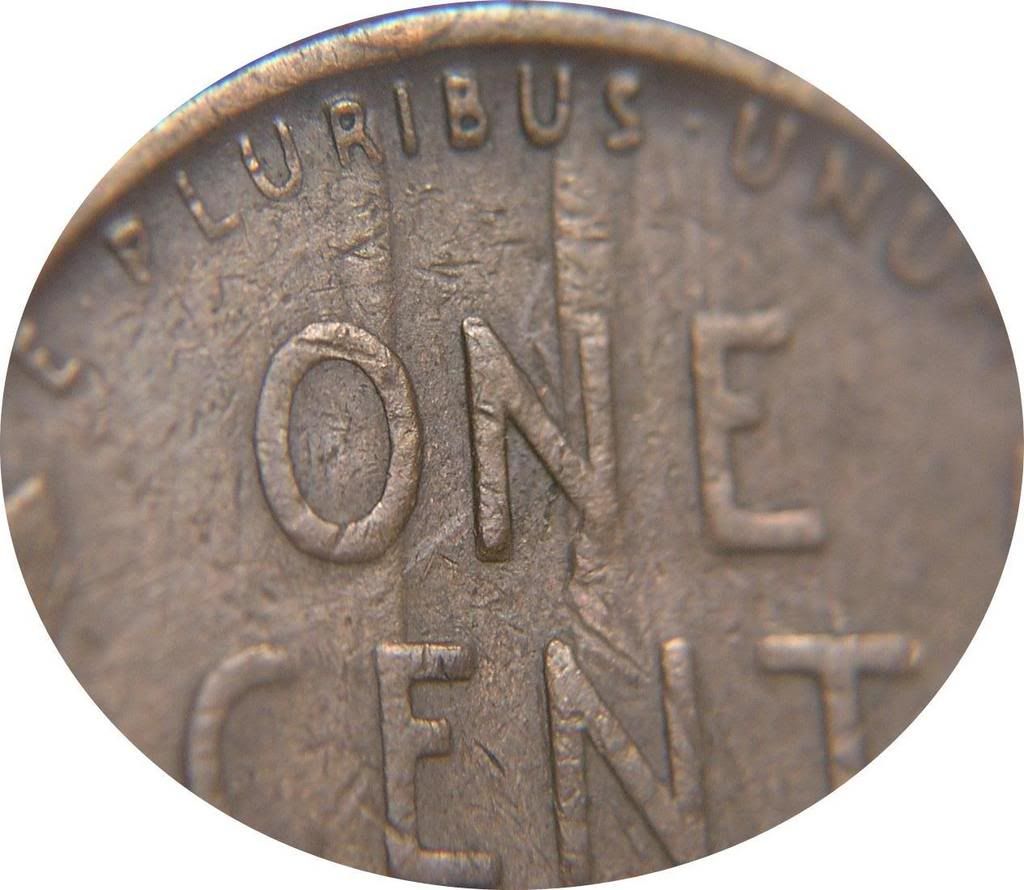Part 2: Marks on a Lincoln ... what are they??
 Swampboy
Posts: 13,156 ✭✭✭✭✭
Swampboy
Posts: 13,156 ✭✭✭✭✭
I originaly asked this question in this post Marks on a Lincoln....
Here's the reverse of my 44-S Lincoln.

I got a pm recently from Thenewguy after posting this pic in Ray's B'day thread...

Here's the pic he sent me of his circ 44-S...

In reply to my original post Shamika said these were roller marks from the strip of copper the planchet was cut from.
CaptHenway said "Those lines are caused by the feed fingers sliding back and forth over the lower die in the press as they kick out each struck coin and bring in a new planchet."
I had been inclined to go with CaptHenway's explanation but Thenewguy bring's up the point "If it is caused by feeder fingers they must have been worn into the die pretty deep to make these coins."
Can someone shed any more light on this? We now have two 44-S's and two curious owners.
Here's the reverse of my 44-S Lincoln.

I got a pm recently from Thenewguy after posting this pic in Ray's B'day thread...

Here's the pic he sent me of his circ 44-S...

In reply to my original post Shamika said these were roller marks from the strip of copper the planchet was cut from.
CaptHenway said "Those lines are caused by the feed fingers sliding back and forth over the lower die in the press as they kick out each struck coin and bring in a new planchet."
I had been inclined to go with CaptHenway's explanation but Thenewguy bring's up the point "If it is caused by feeder fingers they must have been worn into the die pretty deep to make these coins."
Can someone shed any more light on this? We now have two 44-S's and two curious owners.
"Inspiration exists, but it has to find you working" Pablo Picasso
0
Comments
1969s WCLR-001 counterclash
I think we can discount the feed finger marks because how would they get there over the rim as seen in your image.
Also, notice how the lines match up perfectly on both pieces. They're siblings.
"Inspiration exists, but it has to find you working" Pablo Picasso
"Inspiration exists, but it has to find you working" Pablo Picasso
Several articles on this phenomenon have appeared in Errorscope, although I'd have to rummage through them to get the exact references.
Not all of his site is fully functional at present.
There's a copper forum there also.
The picture above is the reverse of a 1944-P (photo by previous owner, renomedphys). It's got some vertical marks in the upper left fields.
On all three of the Lincolns posted so far, these lines are only vertical. I agree with the poster in this thread (or the one linked in the first post, or wherever I read it here!) that die polish would be unlikely for lines that line up with the vertical axis of even one coin.
Capt Henway's feed-finger idea, in which the alignment of the feed finger is related to the die alignment makes sense for the two 44-S's if a die smashed on the feed finger once. Then, the feed-finger-clashed bottom die stamped out Swampboy's and Thenewguy's pieces. If so, there might be a 44-S out there with feed-finger clashing on the obverse AND the reverse. In this scenario, the obverse die got changed before Swampboy's cent was struck. That is way cool, by the way, that those two are so identical. Makes me think of the die progression coin sets that sometimes get assembled.
But for the 44-P, perhaps the reverse side of the planchet just got rubbed during the feed finger operation before being struck. The vertical marks are very light, and appear only as variation in the toning. I don't think rolling marks, or again, die polishing, are likely causes of marks aligned perfectly with the coins vertical axis.
https://pcgs.com/setregistry/showcase/2819